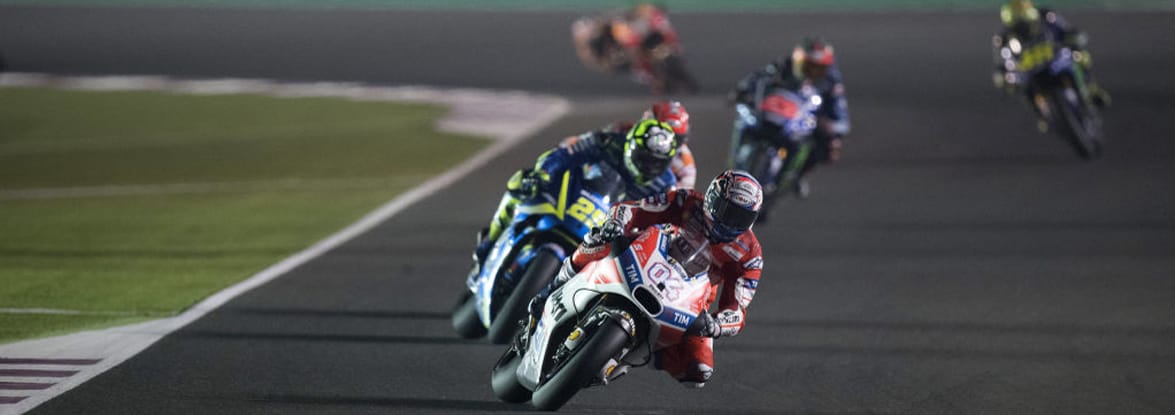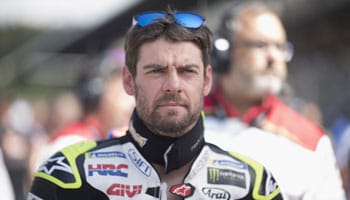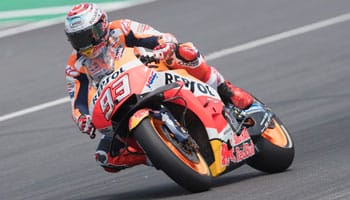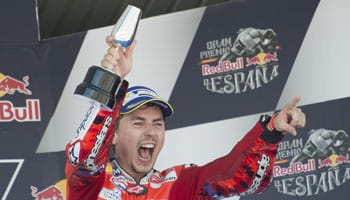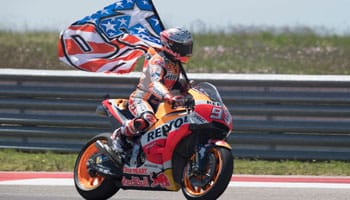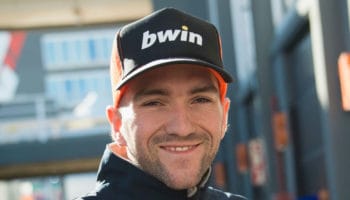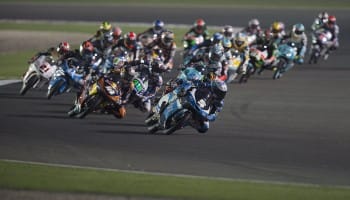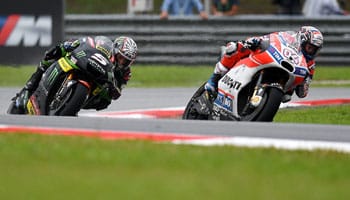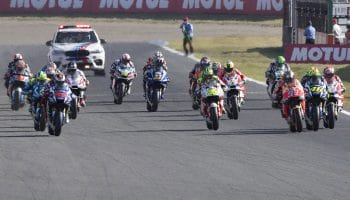Keith Huewen explains to us the basic rules of Moto GP and answers some frequently asked questions. For his expert view on more specific aspects of Moto GP racing, have a look at:
Moto GP qualifying and practice rules
Moto GP basics: Frequently Asked Questions answered by Keith Huewen
What is Moto GP?
“It’s the premier motorcycle racing class – the Formula One of motorcycle racing.”
Where was the first Grand Prix held?
“The first Grand Prix was, believe it or not, in the Isle of Man in 1949 where the top category was the 500cc class.”
Wait – 500cc class? Weren’t we talking about Moto GP?
“Since 2002, the 500cc class has been replaced by Moto GP. The last winner of the 500cc was none other than Valentino Rossi.”
When does the Moto GP season start?
“Usually in March. However, that might change in the future as they are trying to add a few Grand Prixs to the season.”
Where does the Moto GP season start?
“The season traditionally starts in Qatar (2017 highlights below) and has done so since 2007. We had our first ever night race in Qatar in 2008, and that race has been held at night ever since. Races usually start around 2pm UK time, to hit prime time TV in Europe, but sometimes this changes to suit big sporting clashes.”
How much does the Moto GP bike weigh?
“157 kilograms is the minimum weight. If your bike weighs less, you break a technical qualification and are immediately disqualified.”
How many Moto GP tracks are there?
“18 in 2017. I suspect there will be 20 in a few years’ time.”
Does each Moto GP have a different circuit map?
“Yes. We have a great combination of tracks in Moto GP and none of them are boring. We sometimes use different parts of the track from Formula One – they tend to like chicanes, but we hate them.”
How many laps does a typical Moto GP race have?
“That’s a tricky one to answer. It depends on the length of the track. There is a minimum race distance of 95 kilometres (59 miles) and a maximum of 130 kilometres (81 miles) per race. Silverstone is the longest racing circuit with a distance of 3.5 miles per lap, whilst Sachsenring in Germany is only 2.2 miles long.”
How does Moto GP qualifying work?
“Qualification in Moto GP consists of free practice rounds and then two qualifying sessions. From the first three free practices, the riders setting the fastest 10 lap times qualify for Q2, the main qualification session. Q2 decides the first four rows of the starting grid. The other 13 riders who clocked slower times will compete in Q1 and sort out the starting grid from the fifth row backwards. The two fastest riders from Q1 then join qualification 2. Those 12 men will battle it out for the front four rows of the starting grid., which has just three riders per row.”

General Moto GP rules
What are the rules of the FIM Moto GP?
“The rulebook is wonderful in Moto GP, in large part because it’s not as complicated as F1. To put it simply – a Moto GP bike is a prototype, currently 1000 cc. It has a universal software package across all manufacturers, (the Engine Control Unit (ECU) is where all the trickery in motorsports generally takes place). The organisers of the sport have managed to force this universal software package upon the manufacturers, which is nowhere near as complex as it has been in the past.
“The main regulations in Moto GP are: four-cylinder motorcycles, six-speed gearboxes and unleaded fuel – those are the sorts of parameters you are working with within the rules of the FIM for MotoGP.”
What are the regulations relating to Moto GP engines?
“We have a stroke and bore maximum and minimum – no turbos are allowed. A minimum weight limit of 157kg for MotoGP bikes is stipulated and does not include the riders – Formula One weighs driver and car overall. Strangely, they do include rider weight for the support classes in Moto2 and Moto3. Moto GP has a 22-litre fuel capacity limit as well – purely and simply because fuel limits the power a motorcycle potentially can chuck out – more power will use more fuel.”
What changes will Moto GP undergo in 2017?
“It’s going to be all about aerodynamics in 2017. There are no more external wings – they have been banned. Larger fairings with built-in wings are the new thing.”
Moto GP betting
Moto GP is not only an extremely exciting sport to watch, but also to bet on. Fans can choose from a number of betting options, both on the Championship and the individual Grand Prix races.
Betting rules
Just like Moto GP and any other sport, betting has its rules, designed for maximum playing pleasure and fair play. Here, you can see how we make betting on sports fun, fair and easy for everyone.


